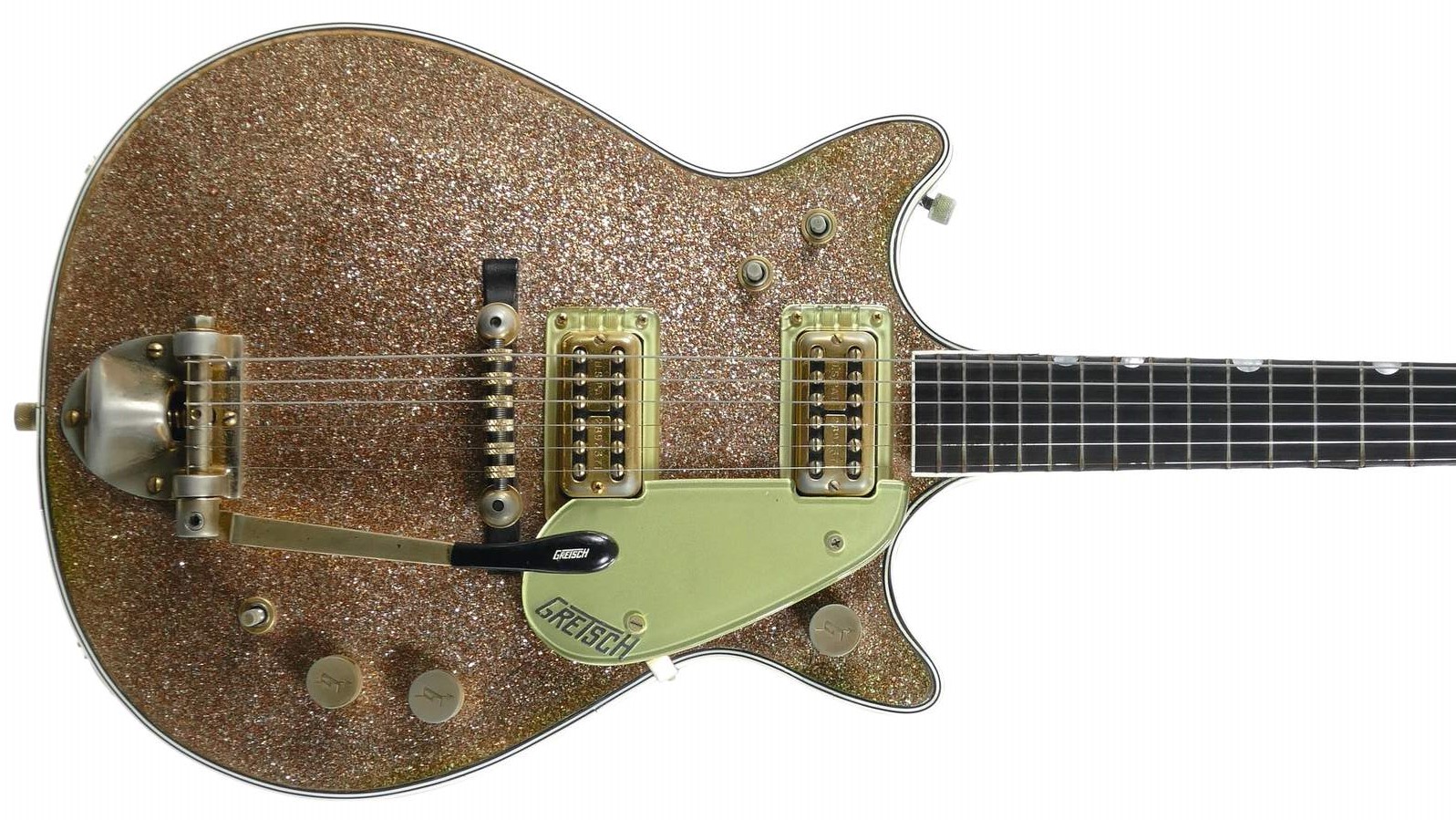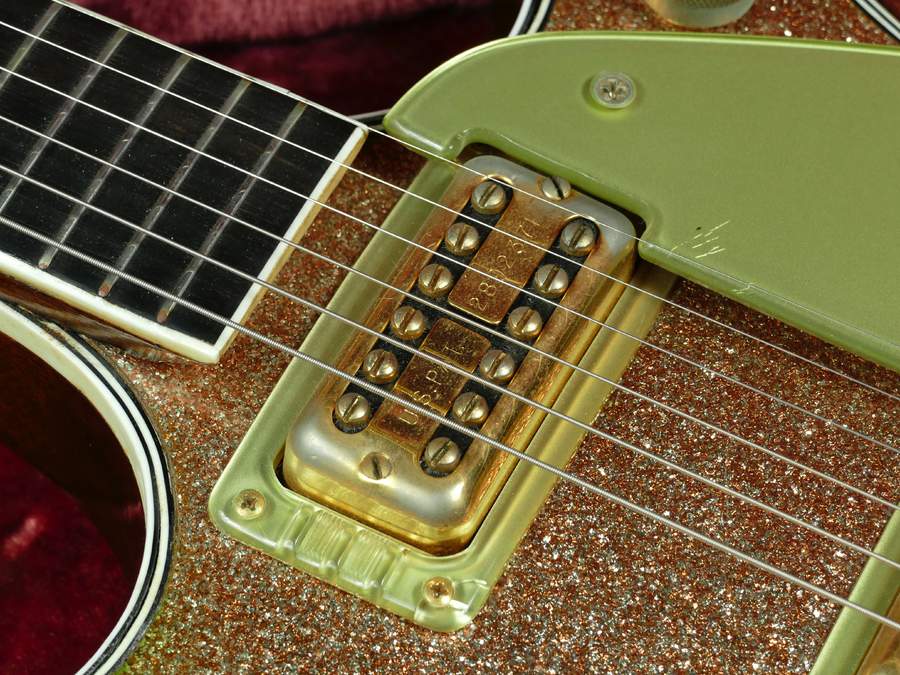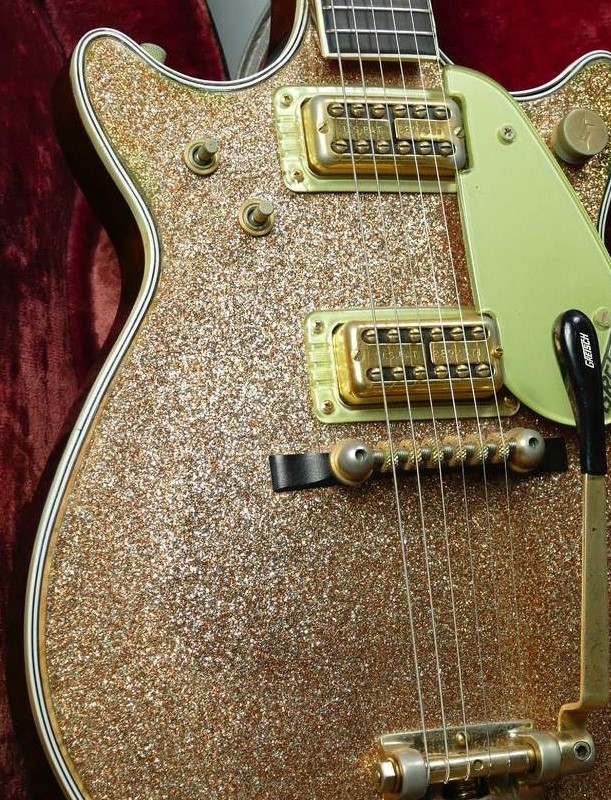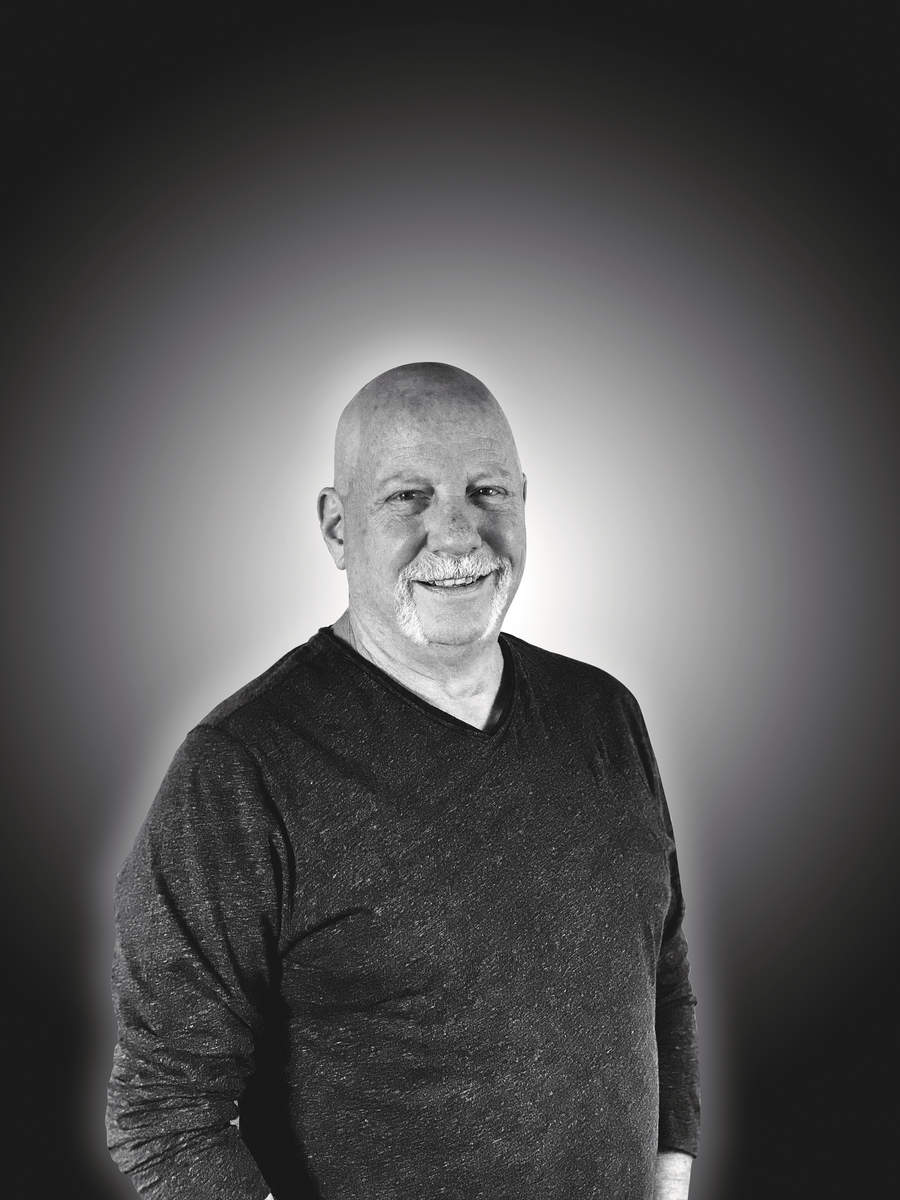Vintage Vault: 1962 Gretsch Duo Jet in Champagne Sparkle Finish
Vintage guitar veteran David Davidson of Well Strung Guitars shines his light on this custom-ordered sparkle finish Jet.

“This is a cool Champagne sparkle finish Duo Jet from 1962,” says David. “A lot of people think of a Jet as a single-cut guitar, but double-cut Jets definitely have a place in rock ’n’ roll history, particularly with respect to the Malcolm Young connection. The AC/DC guys used to come into my store when we were in New York City and buy every double-cut Jet we had!

“Jets stayed with a single-cut until ’61. Which would remind you very much of the Les Paul changing over to the SG body style. They were all following each other. The Duo Jet came out in ’53, so it was only a matter of months after the Les Paul came out [in 1952].
"Interestingly, the Duo Jet was the more playable guitar to begin with because of the Les Paul’s combination tailpiece. Also, earlier on, the Gretsches were fitted with DeArmond [Model 2000/Dynasonic] pickups, which had a wonderful reputation within the archtop community. Jets stayed with the DeArmond pickups until ’58 when Gretsch introduced the Filter’Tron.

“Gretsch had the Silver Jet listed as a separate model [from 1954], but then from the early 60s you could just custom order a Duo Jet in various sparkle finishes like Silver, Gold and Champagne. I have also seen some in a red sparkle, and I’ve seen some in a blue sparkle.
"And there’s the ‘pink champagne’ Jet that used to belong to Eric Clapton. It eventually ended up in the Songbirds museum. That’s a very special guitar – a sort of pinky, purple sparkle. Lighter than a plum, but darker than a pink, almost like a lavender sparkle. Just gorgeous. I bought this Champagne sparkle Jet originally in about 2004 from a collector called Gordon Dow, who’s sadly now passed away. He was a huge authority on Gretsch guitars and was the guy who originally sold Eric the ‘pink champagne’ Jet.

“When I first got into the vintage guitar business, there were so many used Gretsches around New York. I mean, the old Gretsch factory [in Brooklyn] was only about 30 miles from where I’m sitting right now. I imagine it was very similar if you were in southern California in the 70s; there were tons of used Fenders around. I wish I was there!
"We would always get lots of people coming in with original Gretsches. One day, I had a guy in the store and he was looking at a 6120, like the Pete Townshend "Won’t Get Fooled Again" guitar, which was hanging up on the wall. I said, ‘Hi, can I help you?’ and he says, ‘I made that guitar. I was on that production run for more than a year. If you take out the bridge pickup, you’ll see my initials on the back of the wood.’ I was intrigued, so I took the guitar down, took the pickup out, and sure enough there were his initials: ‘FG’. It was Fred Gretsch Jr!
Get The Pick Newsletter
All the latest guitar news, interviews, lessons, reviews, deals and more, direct to your inbox!

“I’ve always loved these ‘thumb print’ inlays. At the time, everybody was doing dots or blocks, and I thought the neo-classic inlays looked great. Even as a child I found those to be intriguing. There was a music store – long gone now – in New York called Sam Goody. It was a record shop, but they also sold Gretsch guitars. When I was a child, I would go into Sam Goody to look at records, but I would always end up walking over to look at the guitars. Gretsch even had their own Sam Goody model. The f-holes were shaped like a ‘G’. I’ve had a couple over the years.
"Again, being brought up in Gretsch country over here in New York, you see everything at some point or another. One of the first walk-in guitars I bought off the original owner was a double-cut Silver Jet, and that was probably in the late 70s. Back then, they were just used guitars; nobody called them ‘vintage guitars’.

“Gretsch Duo Jets were very popular guitars. I’m amazed to tell you that we still get about half a dozen walk-in original owner Gretsch guitars a year. And they’re pretty much all locals. Last year, I had a guy walk in with a ’54 Duo Jet with a ‘T’-top logo and a tweed case. He says, ‘Yeah, I bought this when I was young.’ He’s an old man now. He got it when he was a teenager. Back then there were plenty of guys playing Jets who couldn’t spit out the big money for a Gibson.
"Most of the guitar heroes of the 50s and 60s were playing Gibsons and Fenders. But Gretsch did good with Eddie Cochran. I remember seeing him in clips of rock ’n’ roll movies from the 50s. He was one of the first guys I really remember using the guitar as a weapon, like Buddy Holly did. It was so inspiring. The guitar wasn’t going to play second fiddle; it was right up there with the voice.”

Visit Well Strung Guitars to see more of David's incredible collection
Rod Brakes is a music journalist with an expertise in guitars. Having spent many years at the coalface as a guitar dealer and tech, Rod's more recent work as a writer covering artists, industry pros and gear includes contributions for leading publications and websites such as Guitarist, Total Guitar, Guitar World, Guitar Player and MusicRadar in addition to specialist music books, blogs and social media. He is also a lifelong musician.
Guitar Center's Guitar-A-Thon is back, and it includes a colossal $600 off a Gibson Les Paul, $180 off a Fender Strat, and a slew of new exclusive models
"We tried every guitar for weeks, and nothing would fit. And then, one day, we pulled this out." Mike Campbell on his "Red Dog" Telecaster, the guitar behind Tom Petty & the Heartbreakers' "Refugee" and the focus of two new Fender tribute models











